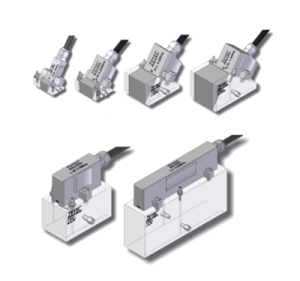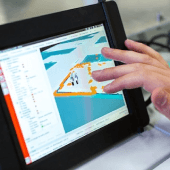Ultrasonic NDT
How to Choose the Right Array Probe for Ultrasonic Testing
Published on 21st July 2021

When you hear the term “array” applied to ultrasonic testing, you may just as well be talking about the range of transducer choices available for UT inspections.
Array probes come in a variety of shapes, sizes, frequencies and the number of elements. If you manage or direct nondestructive testing service providers, it’s important to understand two main types of array probe technology.
1D linear array probes
A 1D linear array probe is the most common type of array for straight beam and angle beam inspections. Think of it as a long transducer that’s capable of generating and receiving a single ultrasonic beam. No matter how a 1D linear array probe is oriented, the focal point and angle of the beam are fixed.
A 1D linear array probe will meet the requirements for most weld and component- integrity inspections, including reliable detection of surface and subsurface defects and wall-thickness measurements. Because of their versatility and cost effectiveness, 1D probes are used in flexible array probes and scanners developed for the detection of flow accelerated corrosion in pipeline elbows.
2D-matrix array probes
2D matrix array probes have elements along two directions. This enables the rapid acquisition of data and the ability to perform a complete volumetric inspection. By exciting each element in a highly controlled manner, a phased array UT instrument and software can produce a precise beam shape at multiple angles and generate two and three-dimensional views of a flaw with speed and accuracy.
2D matrix array probe assemblies and portable phased array instruments are now common for pipeline inspections. These tools have powerful software that allows technicians to virtually position probes on the specimen to ensure maximum volumetric coverage, and then simulate an inspection step by step.
Couplant choices
A UT probe requires couplant to transmit ultrasonic energy from the transducer into the test material and back. The surface texture, type of material, test environment, code requirements, need to minimize cleanup and others factors will influence the couplant you choose.
For instance, the most common couplant is a chamber with standard couplant gel or a mixture of water and gel. A couplant with exceptional wetting characteristics and the desired viscosity will provide more reliable signal transmission during an UT inspection over a large test area.
Water-based couplants can be difficult for a technician using a handheld scanner in a confined space or overhead areas. Alternatives include acoustic-capable polymer materials that can be molded around the material under test. Polymer membranes such as Aqualene—a soft, pliable thermoset elastomer—conform to convex and concave shapes and stay there. It is ideal for flexible array probes and scanners like Zetec’s ElbowFlex scanner used in pipe elbow inspections.
The right probe for the job
Ultimately, the technician’s choice of probe will depend on the job at hand. What kind of access does the inspecting technician have? What materials are used in the welds? What conditions exist around the inspection site (rough surfaces, high or low temperatures, humidity, etc.)?

The wrong ultrasonic probe type can sometimes give you the same actionable results as having no probe at all. If you’re an asset owner, the more information you can provide to the technician, the more straightforward their probe choice will be.
Source: https://www.zetec.com/choose-the-right-array-probe-for-ultrasonic-testing/












